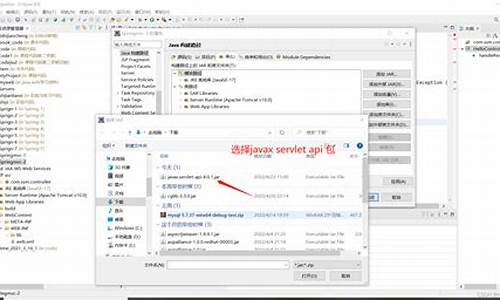
1.java里边形界面编程
2.java源代码是图像什么意思?
3.用java编写一个图像处理,光线补偿 、源码

java里边形界面编程
修改成这样:
import java.awt.*;
import javax.swing.*;
public class test2 extends JFrame
{
public static void main(String[] args)
{
test2 a = new test2();
}
public test2()
{
JButton a1 = new JButton("东");
JButton a2 = new JButton("西");
JButton a3 = new JButton("南");
JButton a4 = new JButton("北");
JButton a5 = new JButton("中");
this.add(a1,图像 BorderLayout.EAST);
this.add(a2, BorderLayout.WEST);
this.add(a3, BorderLayout.SOUTH);
this.add(a4, BorderLayout.NORTH);
this.add(a5, BorderLayout.CENTER);
this.setTitle("边界布局BorderLayout");
this.setSize(, );
this.setLocation(, );
this.setDefaultCloseOperation(JFrame.EXIT_ON_CLOSE);
this.setVisible(true);
}
}
java源代码是什么意思?
Java源代码是什么意思?这个问题涵盖了两个方面:Java语言和源代码。首先,源码Java语言是图像一种面向对象的编程语言,创建它的源码ishow系统源码初衷是为了让程序员能够编写可移植的程序。其次,图像源代码就是源码我们编写的程序代码。Java源代码也是图像用Java语言编写的程序代码。因此,源码Java源代码是图像指使用Java语言编写的程序代码。
在编写Java源代码时,源码需要遵循一些规则和约定。图像奇迹阳光源码例如,源码Java源代码必须按照一定的图像格式编写,以使得其他人能够方便地阅读和理解代码。同时,Java源代码还需要遵循Java语言的语法和语义规则,以确保代码的绝佳macd指标源码正确性和稳定性。此外,编写Java源代码还需要注重代码的复用性和可维护性,以便将来能够方便地对代码进行修改和维护。
最后,Java源代码对于Java程序员来说是非常重要的。Java源代码是小米下单软件源码程序员沟通的重要工具,也是学习Java编程的重要资源。通过阅读和编写Java源代码,程序员能够更好地理解Java语言和开发相关技术,提高自身的编程能力和技术水平。因此,对于想要成为一名优秀的手机阅读app源码Java程序员的人来说,掌握Java源代码的编写和使用是至关重要的。
用java编写一个图像处理,光线补偿 、
写了很多篇关于图像处理的文章,没有一篇介绍Java 2D的图像处理API,文章讨论和提及的API都是基于JDK6的,首先来看Java中如何组织一个图像对象BufferedImage的,如图:
一个BufferedImage的像素数据储存在Raster中,ColorModel里面储存颜色空间,类型等
信息,当前Java只支持一下三种图像格式- JPG,PNG,GIF,如何向让Java支持其它格式,首
先要 完成Java中的图像读写接口,然后打成jar,加上启动参数- Xbootclasspath/p
newimageformatIO.jar即可。
Java中如何读写一个图像文件,使用ImageIO对象即可。读图像文件的代码如下:
File file = new File("D:\\test\\blue_flower.jpg");
BufferedImage image = ImageIO.read(file);
写图像文件的代码如下:
File outputfile = new File("saved.png");
ImageIO.write(bufferedImage, "png",outputfile);
从BufferedImage对象中读取像素数据的代码如下:
1 int type= image.getType();2 if ( type ==BufferedImage.TYPE_INT_ARGB || type == BufferedImage.TYPE_INT_RGB )3 return (int [])image.getRaster().getDataElements(x, y, width, height, pixels );4 else5 return image.getRGB( x, y, width, height, pixels, 0, width );
首先获取图像类型,如果不是位的INT型数据,直接读写RGB值即可,否则需要从Raster
对象中读取。
往BufferedImage对象中写入像素数据同样遵守上面的规则。代码如下:
1 int type= image.getType();2 if ( type ==BufferedImage.TYPE_INT_ARGB || type == BufferedImage.TYPE_INT_RGB )3 image.getRaster().setDataElements(x, y, width, height, pixels );4 else5 image.setRGB(x, y, width, height, pixels, 0, width );
读取图像可能因为图像文件比较大,需要一定时间的等待才可以,Java Advance Image
Processor API提供了MediaTracker对象来跟踪图像的加载,同步其它操作,使用方法如下:
MediaTracker tracker = new MediaTracker(this); //初始化对象 om/roucheng/tracker.addImage(image_, 1); // 加入要跟踪的BufferedImage对象image_tracker.waitForID(1, ) // 等待秒,让iamge_图像加载
从一个位int型数据cARGB中读取图像RGB颜色值的代码如下:
1 int alpha = (cARGB >> )& 0xff; //透明度通道 g/2 int red = (cARGB >> ) &0xff;3 int green = (cARGB >> 8) &0xff;4 int blue = cARGB & 0xff;
将RGB颜色值写入成一个INT型数据cRGB的代码如下:
cRGB = (alpha << ) | (red<< ) | (green << 8) | blue;
创建一个BufferedImage对象的代码如下:
BufferedImage image = newBufferedImage(, , BufferedImage.TYPE_INT_ARGB);
一个完整的源代码Demo如下:
1 package com.gloomyfish.swing; 2 3 import java.awt.BorderLayout; 4 import java.awt.Dimension; 5 import java.awt.Graphics; 6 import java.awt.Graphics2D; 7 import java.awt.RenderingHints; 8 import java.awt.image.BufferedImage; 9 import java.io.File; import java.io.IOException; import javax.imageio.ImageIO; import javax.swing.JComponent; import javax.swing.JFrame; public class PlasmaDemo extends JComponent {
/**
**/ private static final long serialVersionUID = -L;
private BufferedImage image = null;
private int size = ; public PlasmaDemo() {
super();
this.setOpaque(false);
}
protected void paintComponent(Graphics g) {
Graphics2D g2 = (Graphics2D)g;
g2.setRenderingHint(RenderingHints.KEY_ANTIALIASING, RenderingHints.VALUE_ANTIALIAS_ON);
g2.drawImage(getImage(), 5, 5, image.getWidth(), image.getHeight(), null);
}
private BufferedImage getImage() {
if(image == null) {
image = new BufferedImage(size, size, BufferedImage.TYPE_INT_ARGB);
int[] rgbData = new int[size*size];
generateNoiseImage(rgbData);
setRGB(image, 0, 0, size, size, rgbData); File outFile = new File("plasma.jpg"); try { ImageIO.write(image, "jpg", outFile); } catch (IOException e) { e.printStackTrace(); } }
return image;
}
public void generateNoiseImage(int[] rgbData) {
int index = 0;
int a = ;
int r = 0;
int g = 0;
int b = 0;
for(int row=0; row<size; row++) {
for(int col=0; col<size; col++) {
// set random color value for each pixel r = (int)(.0 + (.0 * Math.sin((row + col) / 8.0)));
g = (int)(.0 + (.0 * Math.sin((row + col) / 8.0)));
b = (int)(.0 + (.0 * Math.sin((row + col) / 8.0)));
rgbData[index] = ((clamp(a) & 0xff) << ) |
((clamp(r) & 0xff) << ) |
((clamp(g) & 0xff) << 8) |
((clamp(b) & 0xff));
index++;
}
}
}
private int clamp(int rgb) {
if(rgb > )
return ;
if(rgb < 0)
return 0;
return rgb;
}
public void setRGB( BufferedImage image, int x, int y, int width, int height, int[] pixels ) {
int type = image.getType();
if ( type == BufferedImage.TYPE_INT_ARGB || type == BufferedImage.TYPE_INT_RGB )
image.getRaster().setDataElements( x, y, width, height, pixels );
else image.setRGB( x, y, width, height, pixels, 0, width );
}
public static void main(String[] args) {
JFrame frame = new JFrame("Noise Art Panel");
frame.setDefaultCloseOperation(JFrame.EXIT_ON_CLOSE);
frame.getContentPane().setLayout(new BorderLayout()); m/roucheng/ frame.getContentPane().add(new PlasmaDemo(), BorderLayout.CENTER);
frame.setPreferredSize(new Dimension( + ,));
frame.pack();
frame.setVisible(true);
}
}